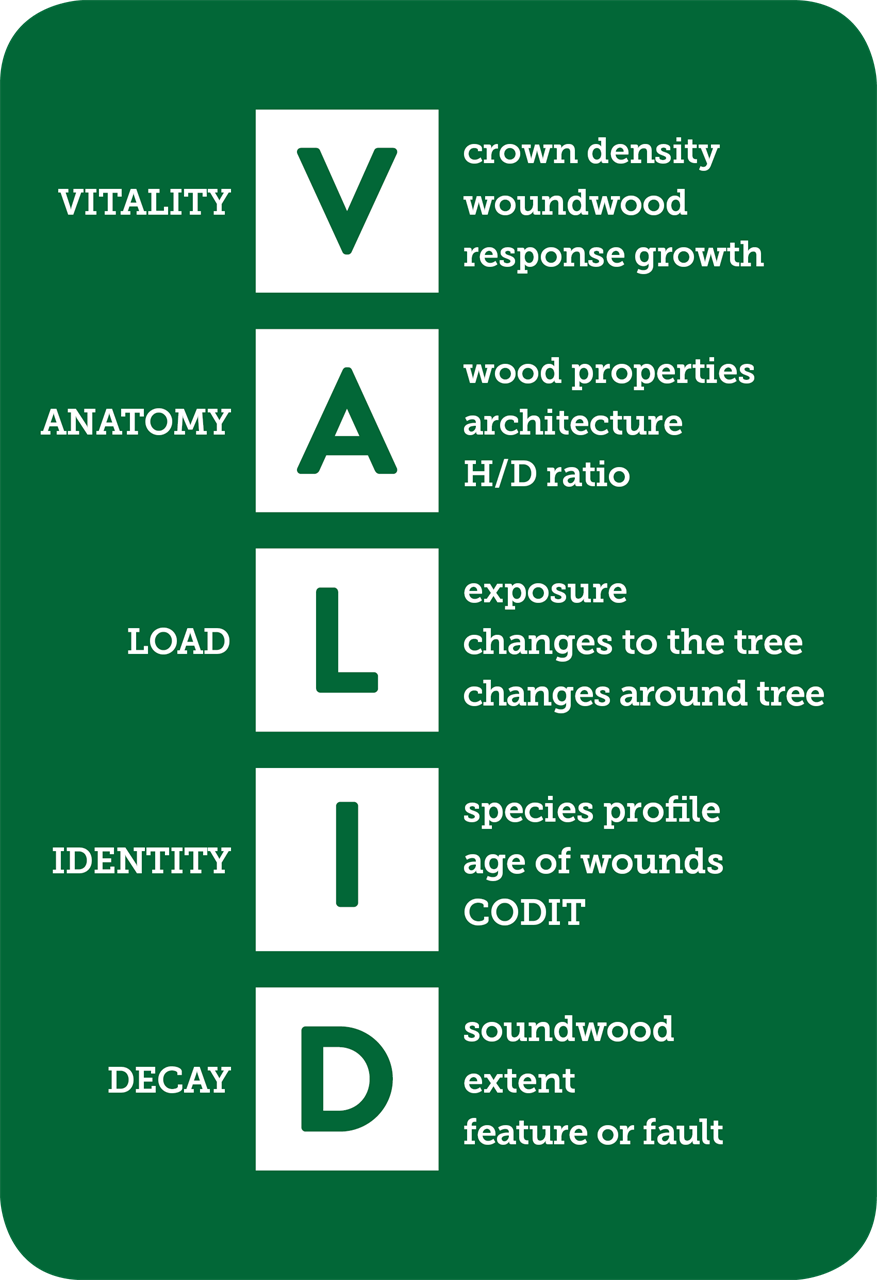We've grown up being told when we assess tree risk we should look out for tree 'defects'. The problem with this approach is what are commonly labelled as defects often aren't defects at all. Hollows, cavities, decay colonies, and deadwood, are natural features of older trees that are usually valuable habitat benefits. It’s seldom these natural features are risks that are not Acceptable or Tolerable. So, why are we labelling them defects before we carry out a risk assessment?
Those of you who know the origin story of VALID might remember the D-word dilemma. Vitality, Anatomy, Load, Identity are all neutral. On the other hand, because Defect means something that's a shortcoming, an imperfection, or a flaw it's not neutral. Defect is pejorative.
Defect is also a begging the question decision-making problem because usually, you can only work out whether a feature is a defect after you've evaluated it and the risk, not before.
Last year, the word ‘defect’ was removed from all of VALID’s Tree Risk-Benefit Management Strategies. Obvious Tree Defects was replaced by Obvious Tree Risk Features. Now, Defect is finally going to be removed as the D-word in VALID.


.png)